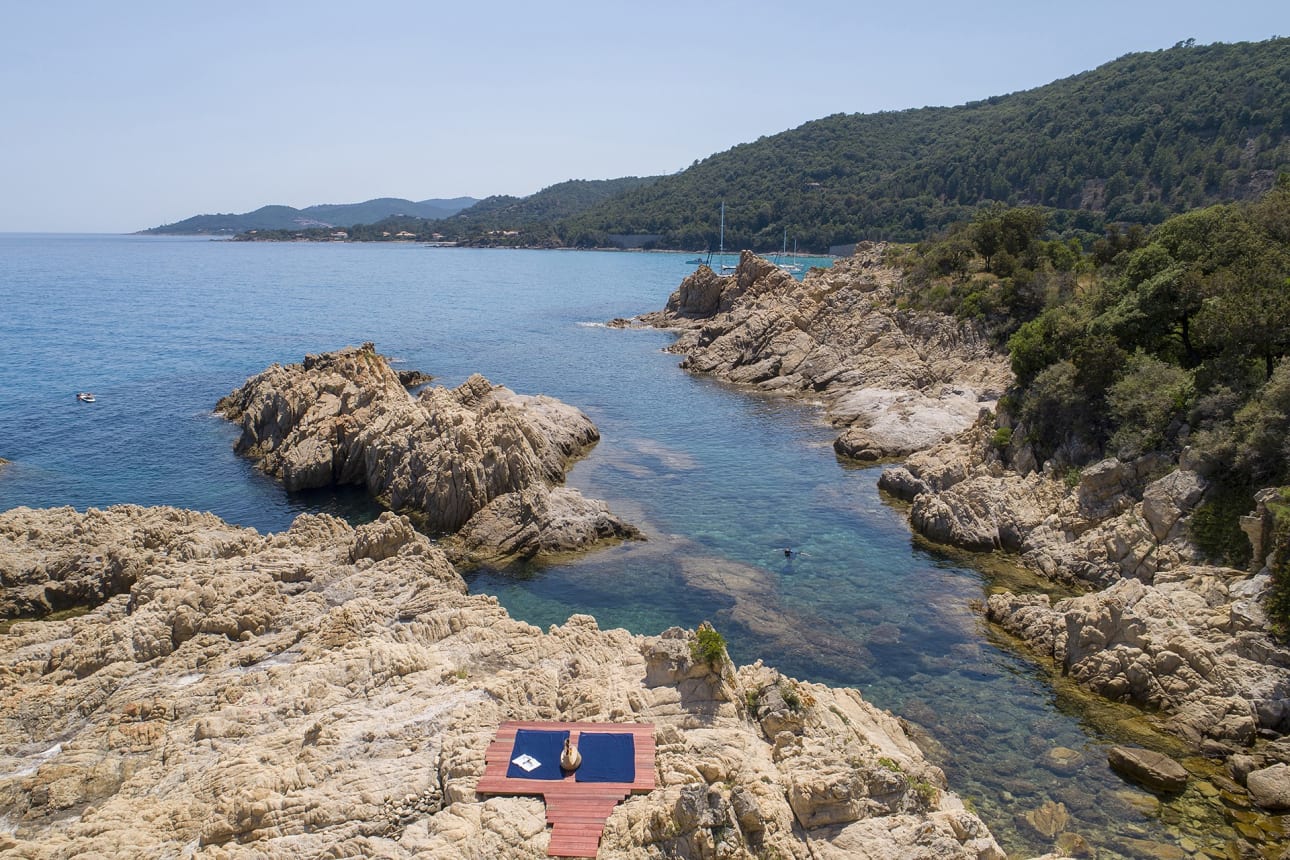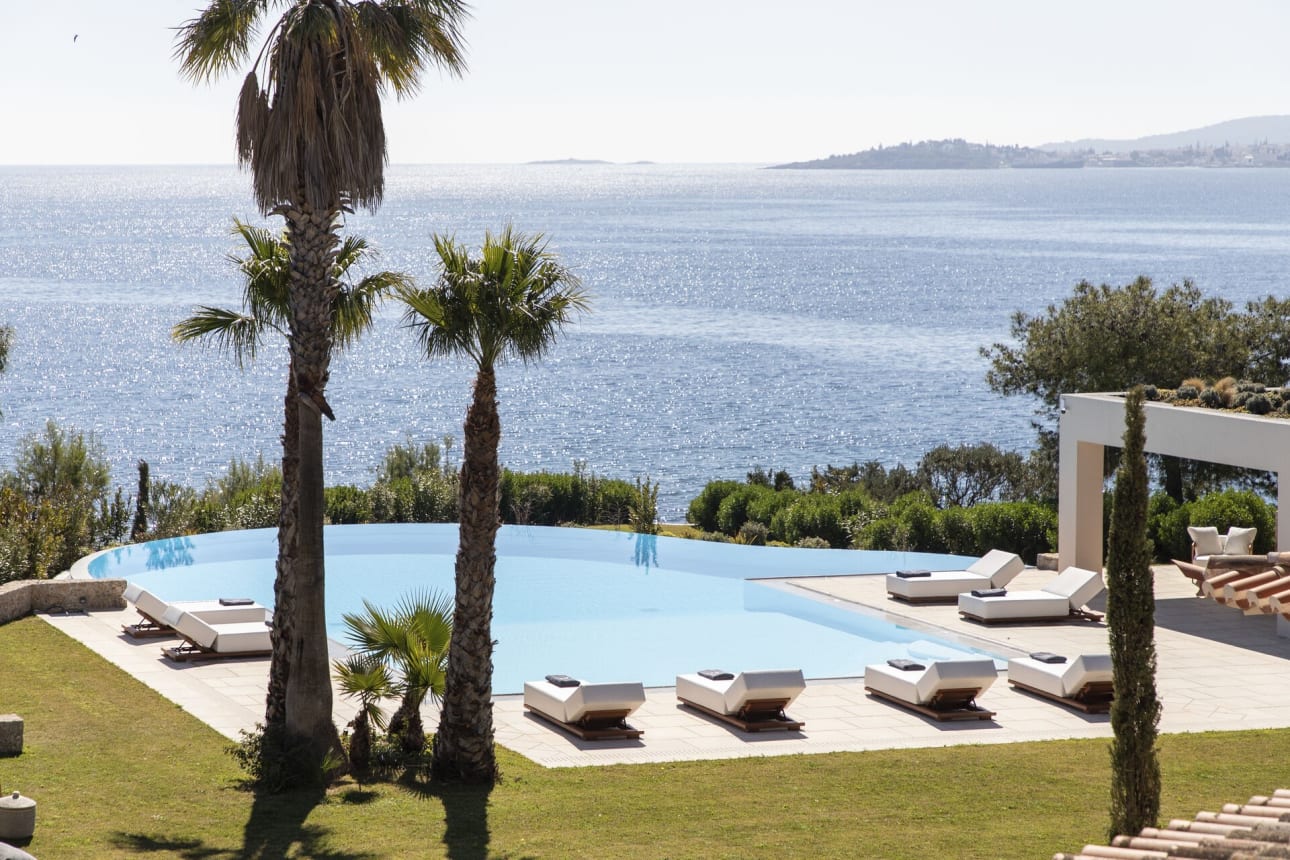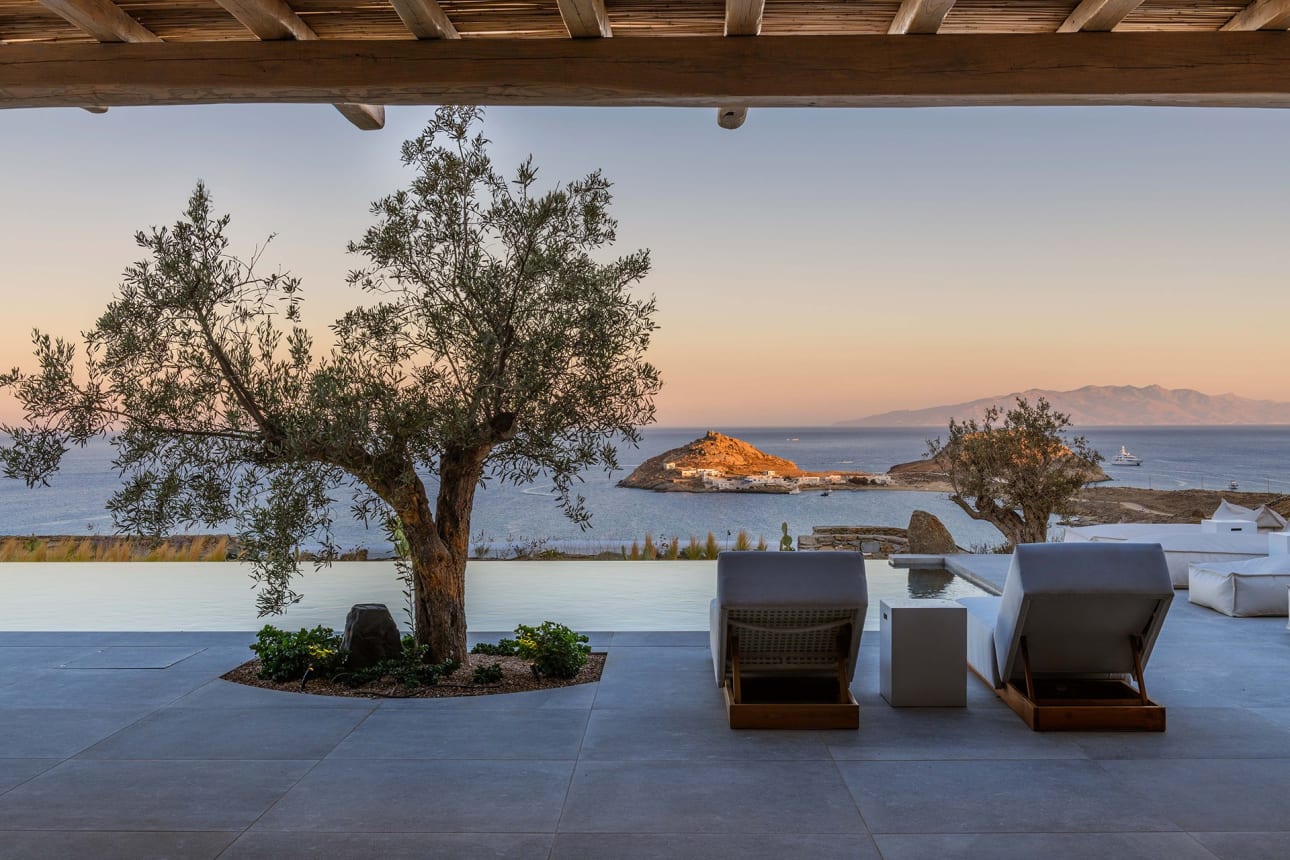An A to Z of Mediterranean destination connections
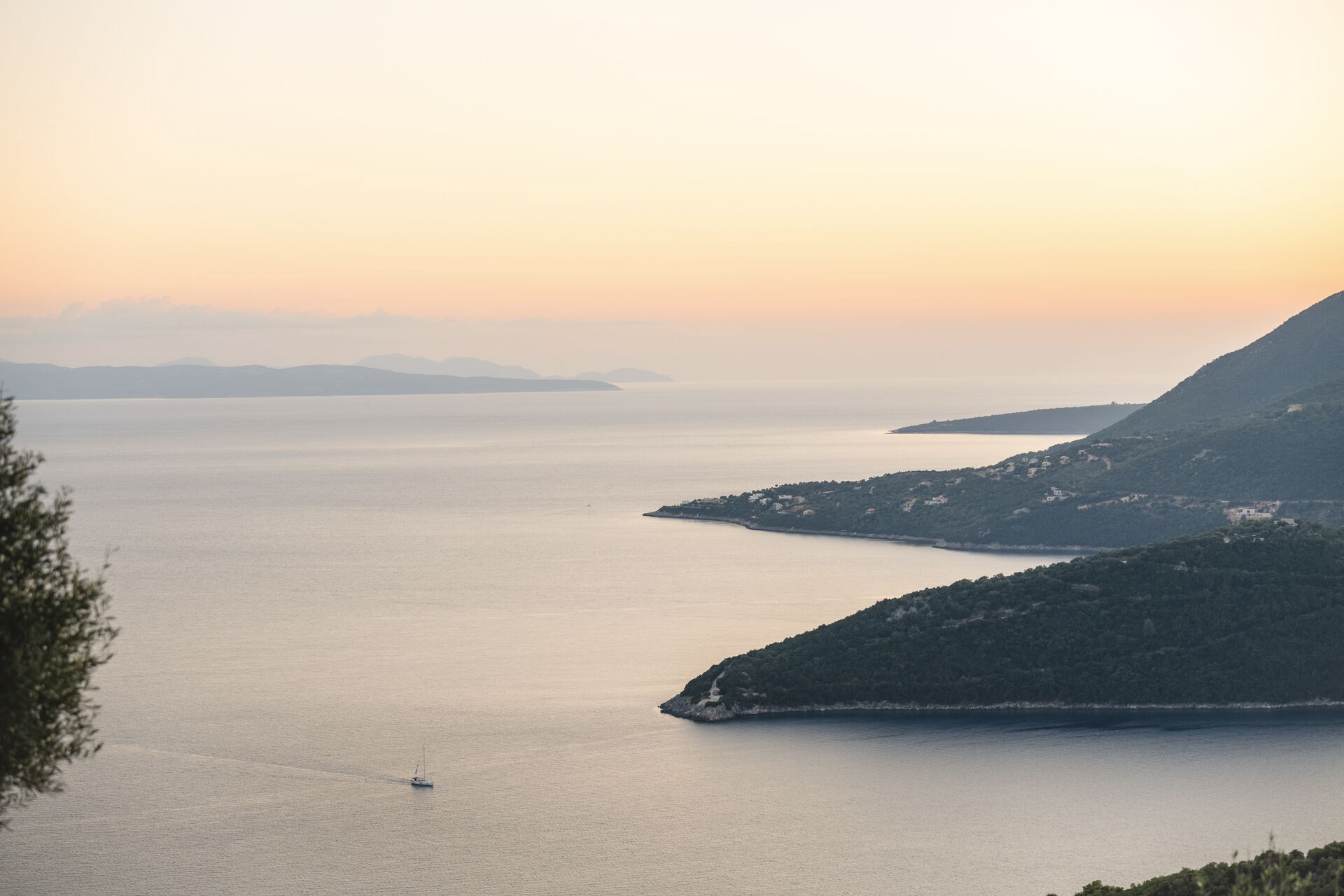
Our destinations are different in so many ways and yet profoundly connected by the Great Sea that laps their shores.
For millennia, a perpetual tide of trade, war, empire-building, politics, intellectual ideas, people, culture, religions, language, fashions and culinary traditions, has ebbed and flowed across the water, leaving behind it a wonderfully complex shared cultural heritage that unites, enriches and makes the Mediterranean such a fascinating and rewarding place to explore.
So how, more precisely, are our destinations – Sicily, Puglia, Greece and its islands, and Corsica – connected? Read our A to Z of destination connections to find out more.
Destination connections A-M
A is for Augustus (aka Octavian)
Both Sicily and the Greek Ionian Islands saw pivotal battles in one of ancient Rome’s greatest power struggles. In 36 BCE, Octavian’s navy defeated Sextus Pompeius at Naulochus near Messina off the northeast coast of Sicily. Five years later, Octavian sent Mark Antony and Cleopatra packing at the Battle of Actium off the north coast of Lefkada in the Ionian Islands. With all his rivals out of the way, Octavian consolidated his power and, from 27 BCE until his death in 14 CE, ruled the Roman Empire as Emperor Augustus.
B is for the British
Leading up to, during and after the Napoleonic Wars, several of our destinations came under British rule.
In 1794, the British government and Pasquale Paoli, the Corsican nationalist hero, formed an Anglo-Corsican Kingdom. It survived for two years before the French regained the island.
From 1806 to 1815, meanwhile, Sicily was governed by the British, who introduced a two-chamber parliament and abolished feudal privileges. At the end of the Napoleonic Wars, Sicily was returned to the Bourbon King Ferdinand IV of Naples (aka Ferdinand I of the Two Sicilies).
Finally, the Ionian Islands passed under British control after Napoleon’s navy was defeated off the coast of Zakynthos in 1809. In 1815, the United States of the Ionian Islands was founded, formalising the archipelago as a British protectorate. Even though Greece became an independent nation in 1830, the Ionian Islands were only ceded to the new kingdom in 1864.
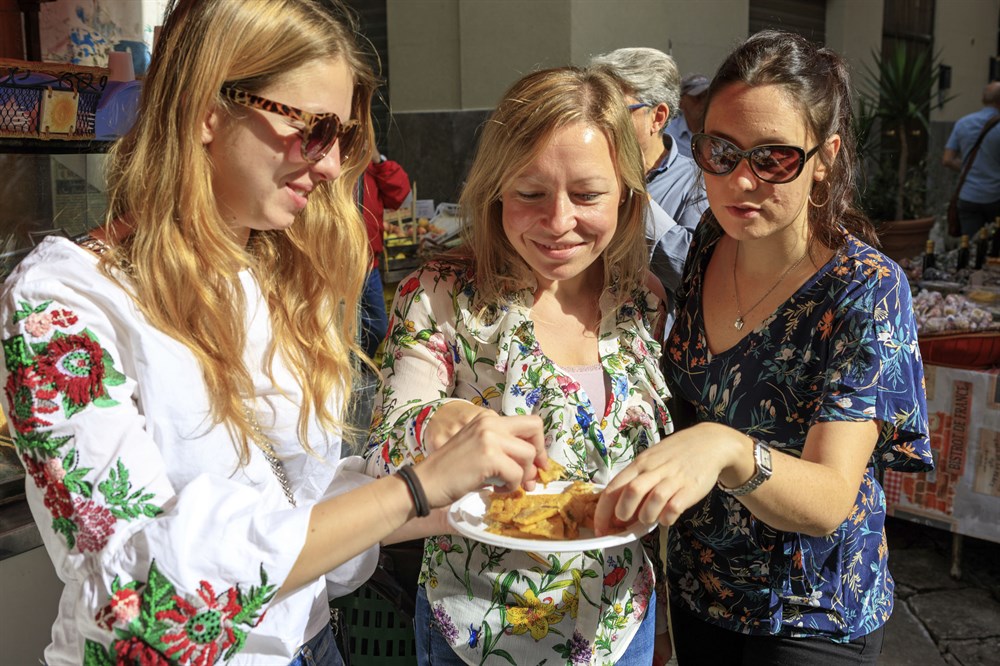
C is for chickpeas
Chickpeas (ceci in Italian and Corsican, and revithia in Greek) are a staple of culinary traditions in all our destinations.
One of the most popular street foods in Sicily (and particularly in Palermo) are pannelle, tasty deep-fried fritters made with chickpea flour and served in a sandwich with a dash of lemon. In Puglia, the locals enjoy tucking in to ciceri e tria, a pasta dish featuring tagliatelle (both boiled and fried) and chickpeas.
Over in Greece, from Corfu to Patmos, chickpea soup (revithia) is a firm favourite, and every chef and home cook has their own unique version.
In Corsica, meanwhile, there are many recipes that incorporate chickpeas. One of the most interesting are sweet, sugar-coated doughnuts (panzerotti) made using chickpea flour. They are particularly popular on the Feast Day of St Joseph on 19th March.
D is for Durrell
Lawrence Durrell, one of England’s greatest 20th-century writers, spent the majority of his adult life living in the Mediterranean. In 1935, at the age of 23, he moved to Corfu, where he remained until 1940. His love for and fascination with the island is evident in Prospero’s Cell, a poetic homage to the “Landscape and Manners of the Island of Corfu”, published in 1945. This was to be the first of a series of Mediterranean travel books, which included Bitter Lemons of Cyprus (1957), Sicilian Carousel, a description of a whirlwind tour of the Mediterranean’s largest island (1977), and a volume entitled The Greek Islands (1978).
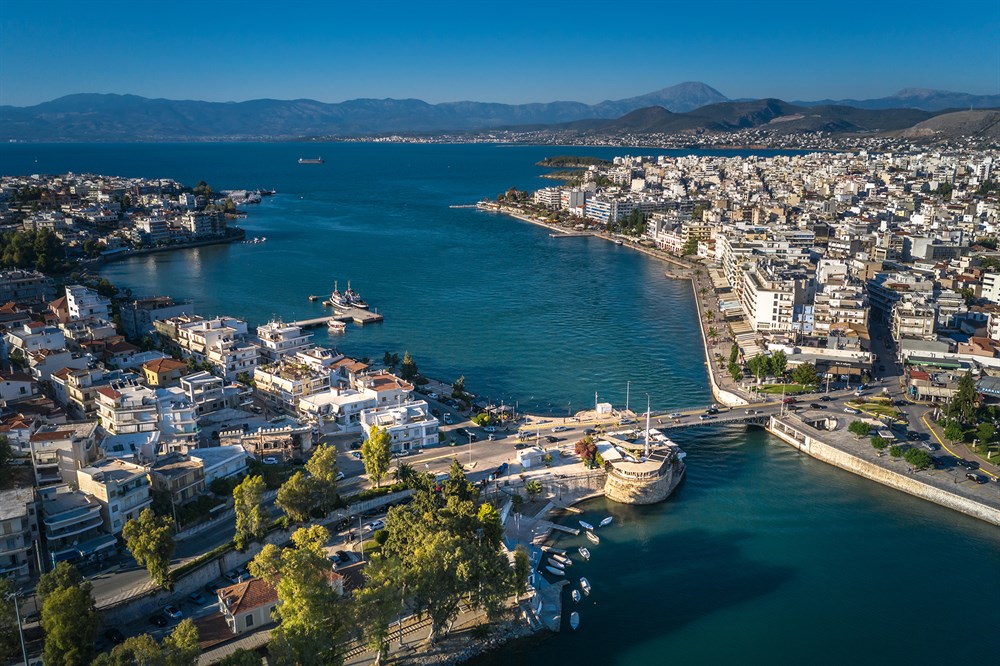
E is for Evia
In the 8th century BCE, Chalcidians from the island of Euboea (now more commonly known as Evia) set sail across the Mediterranean to the east coast of Sicily. Once arrived, they established the island’s first Greek colonies at Naxos, Messina and Catania, thus beginning a period of Hellenic dominance on the island that would continue for some 500 years.
F is for Frederick II, Stupor Mundi
Born in 1194 and growing up in Palermo, Sicily, Frederick II became King of Sicily in 1198, King of Germany in 1212, King of Italy and Holy Roman Emperor in 1220, and King of Jerusalem from 1225. His court at the Palazzo dei Normanni was a seat of learning, poetry, scientific investigation and cultural pursuits.
When not in Palermo or away on crusade, Frederick travelled round the Kingdom of Sicily, which covered most of southern Italy. One of his favourite spots was Puglia, and it was there, in 1250, that his remarkable life came to an end. His body was returned to Palermo and is buried in the city’s cathedral.
One of his greatest visible legacies are his castles, examples of which are to be found throughout Sicily – in Syracuse, Augusta, Milazzo, Catania and Enna - and across Puglia – in Trani, Barletta, Bari, Brindisi, Otranto, and, perhaps his great masterpiece, Castel del Monte near Andria.
G is for gods and goddesses
Greece and Sicily are inextricably linked to Greek gods and goddesses. The island of Delos, just 2km across the water from Mykonos, was the birthplace of Apollo and his sister Artemis. Aegina, in the Saronic Gulf, is home to possibly the only Temple of Aphaia, an ancient goddess of fertility and agriculture. Hermes, the winged messenger of the gods, is said to have been born on the Cycladic island of Syros, whose capital, Hermoupoulis, is named after him. Finally, though the list could go on, legend has it that Tinos was where Hercules slayed the sons of the wind god, Boreas.
Over in Sicily, from around the middle of the 8th century BCE, Greek settlers began to claim certain gods, goddesses and other mythological beings as their own. Polyphemus, the one-eyed giant son of Poseidon, lived in a cave on Mount Etna. He fell in love with the sea-nymph Galatea and killed his rival, a shepherd boy named Acis. Mount Etna was also considered to be the home and forge of Hephaestus, god of blacksmiths and artisans. And the scythe that fell off Demeter’s chariot as she roamed Sicily in search of her daughter Persephone, formed the promontory on which Trapani now stands.
H is for Horatio, Lord Nelson
The great British hero of the Napoleonic Wars, Horatio, Lord Nelson, frequented several of our destinations during his many Mediterranean voyages.
In 1794 Captain Nelson (as he was then) took part in the Siege of Calvi in northwest Corsica. It was a successful battle and the French were expelled, but Nelson famously lost an eye during the fighting.
Four years later, Nelson (by now an admiral) rescued the Bourbon King of Naples, Ferdinand I, from the French, and gave him safe passage across the Tyrrhenian Sea to Palermo. King Ferdinand later rewarded Nelson for his efforts by bestowing upon him the Duchy of Bronte on the northwestern foothills of Mount Etna. It is still possible to visit Il Castello di Nelson nearby.
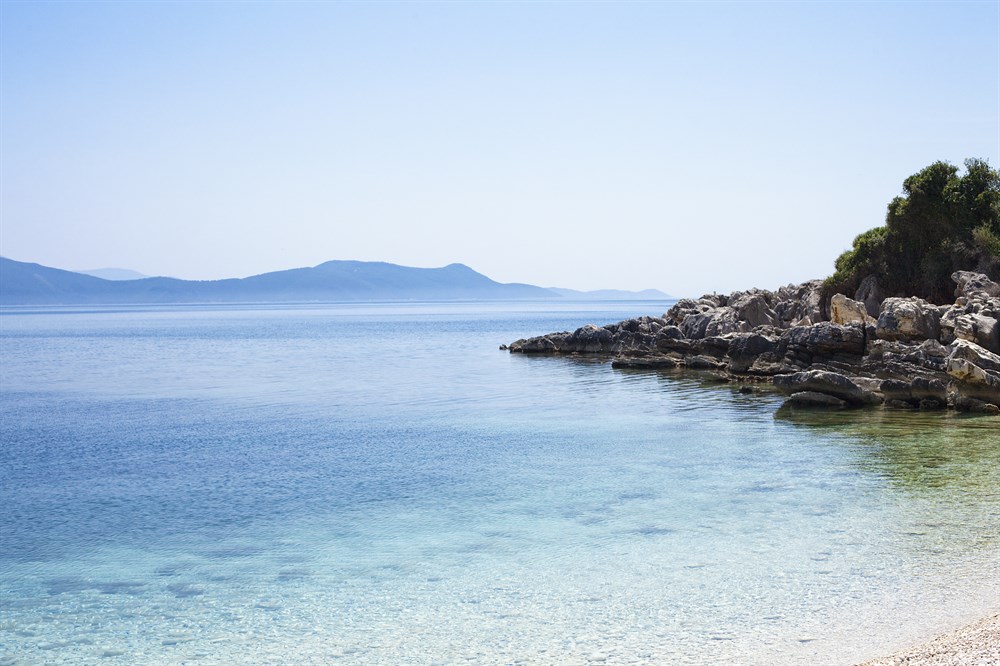
I is for the Ionian Sea
The Ionian Sea provides a watery connection between three of our destinations: it laps the shores of eastern Sicily, western and southern Puglia, and the various islands of Greece’s Ionian archipelago.
J is for Jewish heritage
One fascinating aspect of most of our destinations are the many Jewish sites, some of which date back thousands of years.
Archaeological digs on Delos have uncovered the remains of two ancient synagogues from around the first century BCE, as well as a marble armchair, named the Throne of Moses.
One of the oldest mikvahs in Europe can be found in Syracuse under the Alla Giudecca hotel. It’s 9m long and dates back to the 6th century CE. It remained in use until 1493, when the Jews were expelled from Sicily.
In the Provincial Museum of Bari in Puglia, meanwhile, you can see some of the gravestones of the city’s 8th-century Jewish cemetery.
Finally, standing proud in the old ghetto of Corfu Town is the Scuola Greca, an impressive three-storey synagogue built in the late 17th century in classic Venetian style.
K is for King James II
As well as being the King of Aragon, James II (1267 – 1327) was, at various times during his life, King of Sicily (and therefore also Puglia, which was part of the Kingdom of Sicily), and King of Sardinia and Corsica (amongst others). In practice, he was ruler of three of our destinations.
L is for language
When the Greeks settled in Sicily and Puglia between the 8th and the 3rd centuries BCE, they brought with them their vines, their olive trees and their language. The first two of this trio literally took root, and, perhaps more surprisingly, the Greek language also survives. An area of southern Puglia is known as Grecìa Salentina, and the inhabitants still speak a dialect called Griko. Over in Sicily, many dialect words have Greek origins, for example babbaluci meaning ‘snail’ (boubalákion in Greek) and macari, meaning ‘if only’ (makári in Greek).
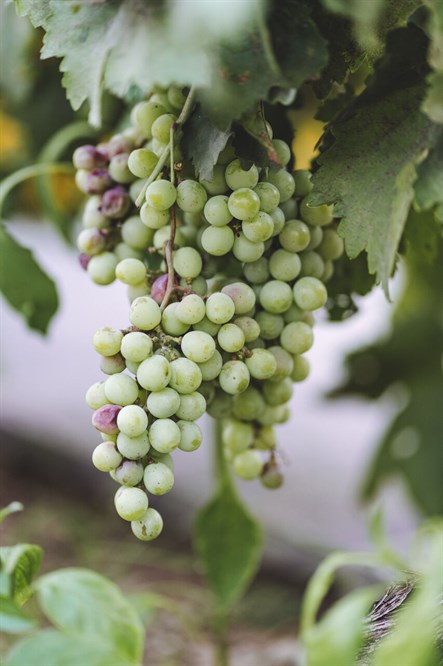
M is for Malvasia
Thought to originate in Monemvasia on the southeast coast of the Peloponnese in Greece, Malvasia is one of the Mediterranean’s best loved and best-travelled grape varieties. The Mycenaeans planted Malvasia vines throughout Greece and also introduced them to Sicily and Corsica. Today, Malvasia, in its various guises, is used to make wines in all our destinations, from the Aeolian Islands to the Cyclades.
Destination connections N-Z
N is for Napoleon
Born in Ajaccio in Corsica, Napoleon Bonaparte was to play a role, either directly or indirectly, in the historical trajectory of several of our destinations.
In 1808, Joachim Murat, Napoleon’s brother-in-law, was made King of Naples. His realm included modern-day Puglia, and one of his projects was to extend the region’s capital city, Bari. The new quarter, known as Quartiere Murat, still has the same layout and several of the original buildings.
Over the Ionian Sea, from 1797 to 1799 and from 1807 to 1814, Napoleon twice annexed the Ionian Islands and introduced the new French constitution there.

O is for Odysseus
The hero of Homer’s Odyssey famously hailed from Ithaca* in the Ionian Islands, but during his 10-year voyage home from the Trojan War, he spent considerable time in two of our destinations.
After fleeing from Calypso, Odysseus suffered a shipwreck and was washed up unconscious on the beach of Paleokastritsa in northwest Corfu. He eventually awoke to find Nausicaa, the daughter of King Alcinous of Phaeacia, standing over him. The king allowed him to stay and recover, and Odysseus earned his keep by regaling the court with tales of his adventures.
One of the stories he recounted to the Phaeacians documented his exploits in and around Sicily, where he had sailed past Scylla (a six-headed monster) and Charybdis (a whirlpool) in the Straits of Messina, escaped from Polyphemus’ cave on Mount Etna, and visited the keeper of the winds, Aeolus, in the Aeolian Islands.
* Some archaeologists believe that Odysseus was from Lefkada or Kefalonia rather than Ithaca.
P is for Pyrrhus
King Pyrrhus, he of the disastrous victory, campaigned both in Puglia and Sicily. In the former, he fought against the Romans on behalf of the city of Taranto, and it was after his success at the Battle of Asculum in 279 BCE that he commented, “If we win one more battle against the Romans, we will be ruined.”
Four years later, he was invited to Sicily to help the island’s Greek cities drive out the Carthaginians. He duly defeated the North Africans at Syracuse but was unable to dislodge them from their stronghold of Lilybeum (modern-day Marsala). Soon the cities he represented turned against him and called on Rome for support instead. Pyrrhus departed Sicily, leaving Rome and Carthage to commence their epic Punic Wars.
Q is for quarries
Many of Europe’s greatest works of art and architecture have been created using stone and marble quarried in our destinations.
St Peter’s Basilica in Rome, the Medici chapel in Florence, and the cathedrals Pisa and Lucca, all incorporate marble from Custonaci in northwest Sicily.
The Cycladic island of Paros fares just as well, and students of antiquity will know that the Venus de Milo, the Nike of Samothrace (both in the Louvre), and the Peplos Kore (in the Acropolis Museum in Athens) are all made of Parian marble. So too is the tomb of Napoleon in Les Invalides in Paris.
R is for Romans
What did the Romans ever do for our destinations? Here are a few examples.
After their success in the Punic Wars, the Romans governed Sicily for over 600 years. One of the outstanding monuments to their presence is the UNESCO World Heritage Site of Villa Romana del Casale, whose 3,500m2 of mosaics are, according to UNESCO, “the finest in situ anywhere in the Roman world”. The Romans also extended and adapted the Greek theatre at Taormina and built an amphitheatre at Neapolis in Syracuse.
In Puglia, the Romans built two of their most celebrated roads - the Via Appia and the Via Traiana (connecting Rome to Brindisi and Bari respectively). In Lecce, they also built a huge amphitheatre that could host some 25,000 spectators. Puglia was also the site of one or Rome’s heaviest defeats, when, in 216 BCE, Hannibal crushed the legions of Gaius Terentius Varro and Lucius Aemelius Paullus at Cannae, killing some 50,000 Roman soldiers in the process.
S is for saints
Wherever you travel with The Thinking Traveller, at some point you will come into contact with saints (or at least saintliness).
Palermo is the city of Santa Rosalia, Syracuse of Santa Lucia, and Catania of Sant’Agata. Bari is the resting place of Saint Nicholas, while Pietrelcina, on Puglia’s Gargano peninsula, is synonymous with San Pio (more famously known as Padre Pio).
Relics of Santa Devota are jealously guarded in Bastia on Corsica, and thousands upon thousands flock each year to the Church of Panagía Evangelístria on Tinos, one of the most important pilgrimage sites in the Greek Orthodox world.
Perhaps most significant of all is Patmos, the island in the Dodecanese where St John the Theologian lived in a cave and wrote the Book of Revelation.

T is for temples and theatres
Sicily and our destinations in Greece are home to innumerable ancient Greek temples and theatres, and you’ll never be far from a masterpiece of Classical architecture.
In Sicily, there are temples galore at the aptly named Valley of the Temples in Agrigento, and other fine examples can be found at Selinunte, Segesta and Syracuse. The latter two also boast impressive theatres, as does Taormina, Tindari, Palazzolo Acreide, and Iato.
Over in Greece, just a short drive from Porto Heli on the east coast of the Peloponnese, is the epic theatre of Epidaurus, whose acoustics are famed throughout the world.
If you’re on Mykonos, meanwhile, the nearby islet of Delos boasts temples, a theatre and many other treasures.
The archaeological sites of Eretria on Evia, and Karthaia, on Kea, are both home to a theatre and a temple.
And last (at least for this limited space), is the Saronic island of Aegina, proud home of a splendid Temple of Aphaia.
U is for the underworld
Where should you go if you wish to visit the underworld? Here are a few suggestions for those staying in our destinations.
The now vanished lake at Lerna, near Porto Heli, was said to be where Hades descended into his underground kingdom with the less-than-happy Persephone (unless you were a Sicilian Greek, in which case this event took place at Lake Pergusa, near Enna in the centre of Sicily).
Famously, Odysseus also descended into the underworld, but he took a different route, via Lake Acheron, on the west coast of Greece, just across the water from Paxos, and a short drive from Lefkada.
V is for volcanoes
One of the Aeolian Islands (Vulcano) gave its name to the geological phenomenon of volcanoes, and its sister islands, including ever-erupting Stromboli and twin-coned Salina were made of the same stuff. And, of course, Sicily’s east coast is dominated by Europe’s highest active volcano, Mount Etna.
It may not be obvious to the naked eye, but Corsica’s rugged, mountainous interior was formed by a collapsing volcano. Much more evident volcanic origins can be seen on Aegina and its neighbouring Saronic Islands.
Perhaps somewhat fittingly, the Island of the Apocalypse, Patmos, is thought to have been devastated by an earth-shattering volcano nearby, a theory that would explain its peculiar disjointed shape.

W is for wine stories
According to legend, Dionysus (aka Bacchus) brought vines to Sicily, and his son, Staphylos, did the same for Skopelos in the Sporades Islands. Aristotle refers to Skopelos’s famous peparithos wine as a well-known aphrodisiac.
Pliny the Elder devoted a section of his epic Natural History to wine and sang the praises of two Sicilian wines: Mamertine from Messina, and Tauromenitanum from near Taormina.
At one point in For Your Eyes Only, renowned wine expert James Bond asks for a glass of Theotoki Aspro, a white wine made by one of Corfu’s most prestigious producers.
Alexandre Dumas included “Syracuse’s white and red muscat wines” in his Great Dictionary of Cuisine (1873), and in both The Three Musketeers and The Count of Montecristo, the main characters drink Moscato from Syracuse.
While on his Grand Tour in the mid-1750s, Dr Johnson’s biographer James Boswell journeyed to Corsica. Whilst there he fell in love with the island’s wine: “In some villages, they make a rich sweet wine… (in others) they make wine very like Burgundy… over the whole island there are wines of different sorts. It is indeed wonderful, what a difference a little variation of soil or exposure will make in the taste of wine. The juice of the Corsican grapes is so generous… it will always please by its natural flavour.”
X is for Xerxes
When Xerxes, King of the Persian, crossed the Hellespont in 480 BCE, Athens readied itself for an inevitable invasion. Thermistocles appealed for help from its allies throughout the Mediterranean, including the Greek colonies of Syracuse and Akragas (modern-day Agrigento in Sicily. Xerxes had foreseen such a move, however, and had urged the Carthaginians, under their military leader, Hamilcar, to attack Sicily. The North Africans did as requested, and the Sicilians were unable to come to the assistance of Athens.
While the Carthaginians invaded Sicily (eventually losing), Xerxes won famous battles at Thermopylae and Artemisium and razed Athens to the ground. However, his navy was later defeated by Thermistocles at Salamis and, a year later, the Persian army were beaten at Plataea. Soldiers from Aegina and Kefalonia (two of our other destinations) participated on the side of the Athenians at this final battle.
Y is for York, HMS
HMS York played a significant role in the British Royal Navy’s battles for the Mediterranean during the 2nd World War, and it provides a curious connection between Sicily and Puglia.
During the Battle of Capo Passero (12th and 13th October 1940), HMS York sank the Italian destroyer Artigliere. Then, in November of the same year, she joined Operation Judgment as part of an attack on the Italian fleet in Taranto in Puglia. Several months later, in May 1941, HMS York was attacked and disabled by the Italian navy at Suda Bay, off Crete, and would take no further part in the war. However, the wreck of HMS York was salvaged in 1952 by an Italian company and taken to be broken up in… Bari in Puglia.
Z is for Zakynthos
The Ionian island of Zakynthos has strong connections with Italy, especially with the Venetians, who gave it its still-used alternative name, Zante. The island’s historical connections with two of our destinations, Sicily and Puglia, go back even further.
When Athens was famously defeated by Syracuse at the end of the Sicilian Expedition in 413 BCE, some 7,000 soldiers were imprisoned in the stone quarries that lie at the heart of Syracuse’s archaeological park. Amongst them were men from Zakynthos, who had joined the Athenian forces in Corfu.
Moving forward a millennium and a half to 1185, Zakynthos was captured by Margaritus of Brindisi, the last Grand Admiral of the Kingdom of Sicily (which included Puglia). King William II of Sicily bestowed upon Margaritus the title of Count Palatine of Zakynthos (and Kefalonia) and elevated him to the rank of Prince of Taranto, in Puglia.
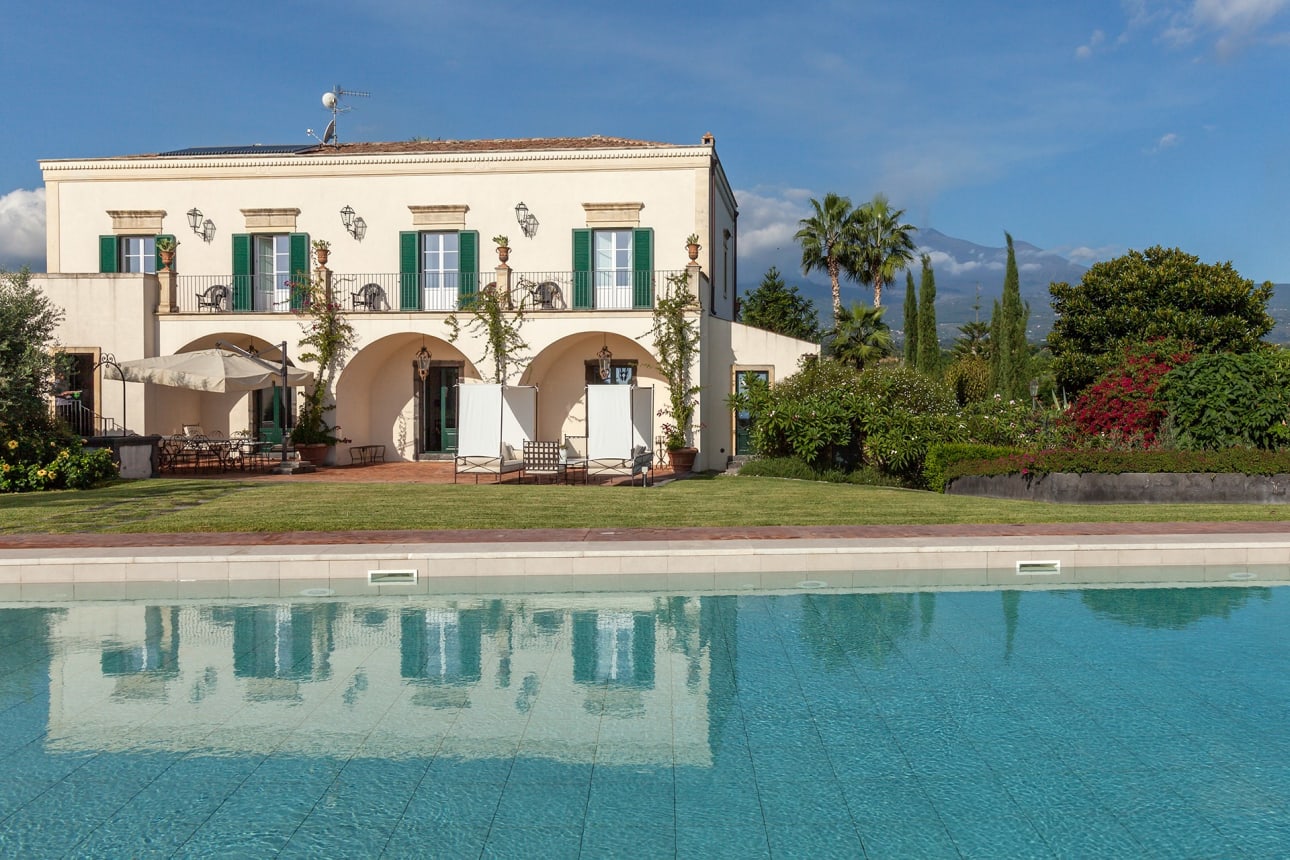
.jpg)
